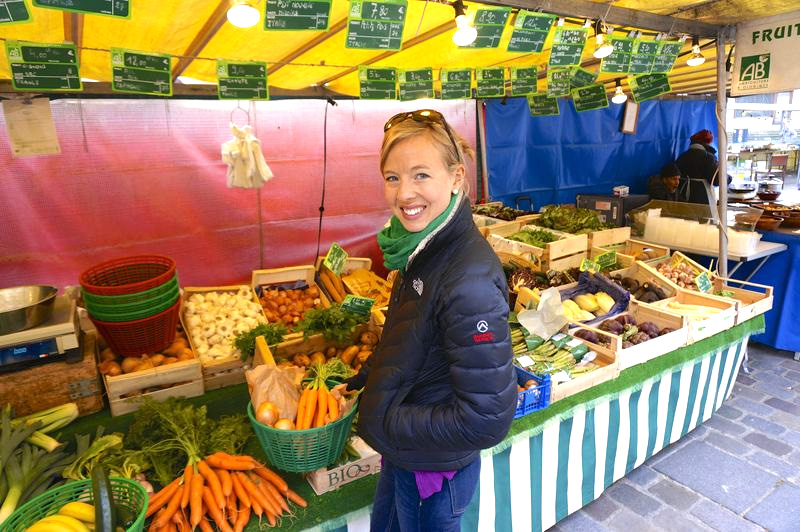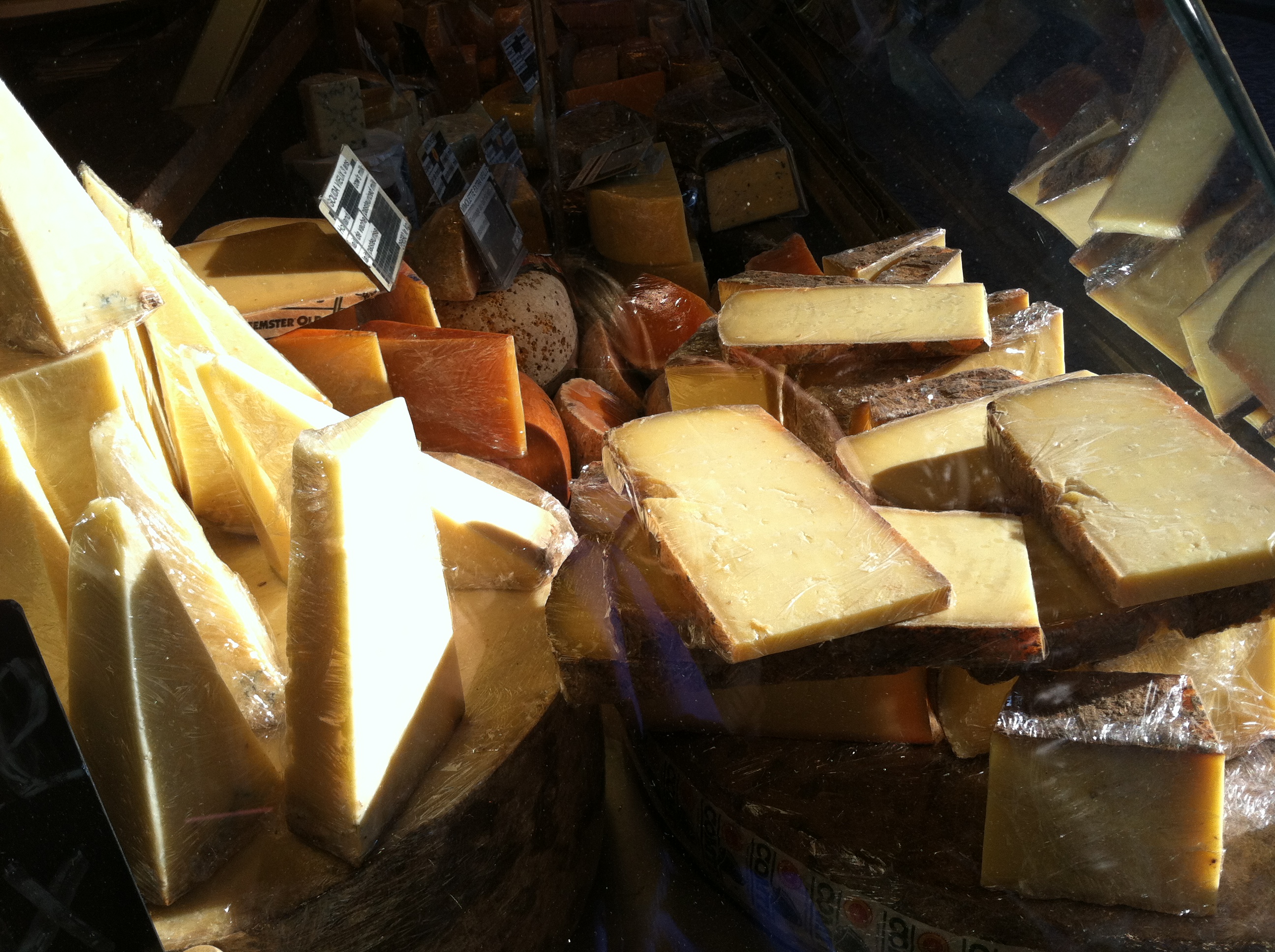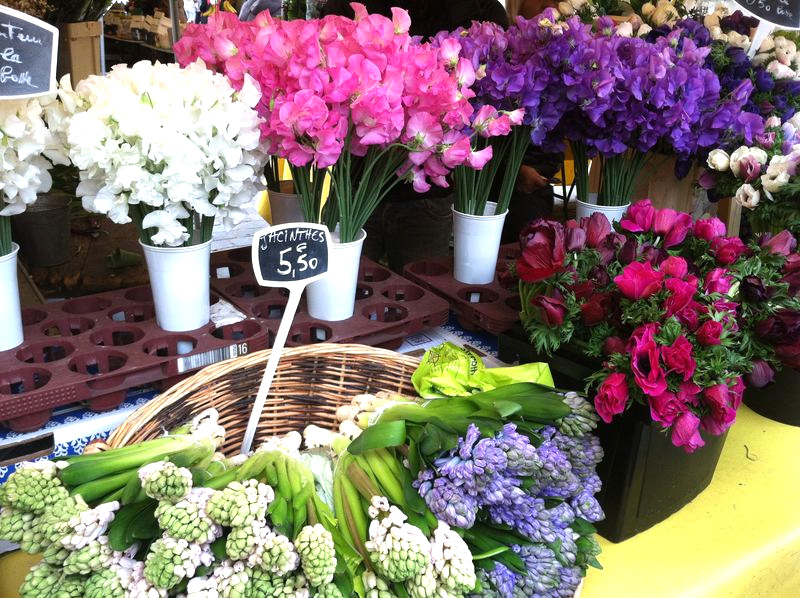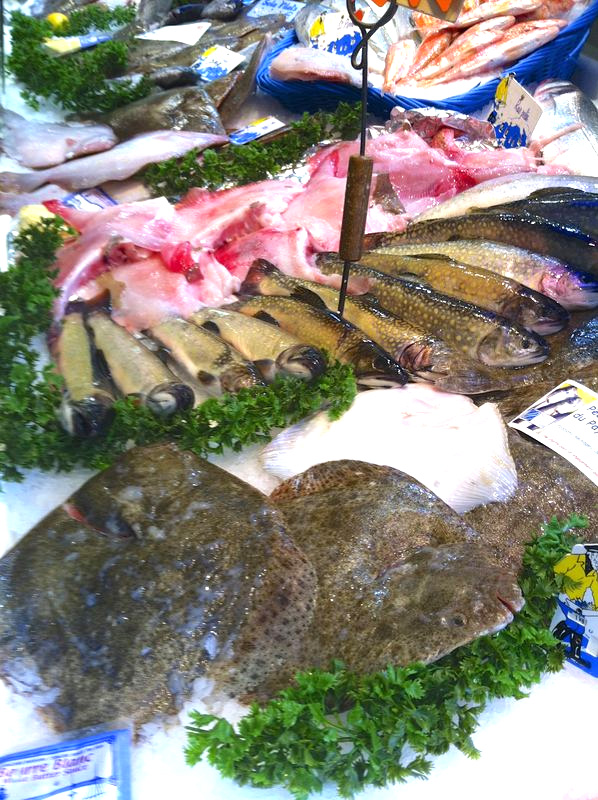
May is one of my favorite months of the year. The days are warmer and the flowers are blooming, but most of all the farmers markets open for the summer. I love wandering through the stalls, talking to the farmers, and picking up produce that was harvested that morning. There is nothing better for a local food junkie!

Europe does an excellent job with markets (as opposed to say toilet seats!) and I’ve been visiting them whenever I can. There were a few standouts in Paris – especially the Raspail organic market, but every place we’ve visited has had some type of market to explore. Back in Boston, I particularly love Siena Farms at the Copley Market or at their South End farm store.
I start any market visit by walking past all the vendors to scope out the offerings and prices. I want to make sure I’m getting each item from the best place. I also try to spread out my spending so I am supporting as many local vendors as possible. I often buy tomatoes at one place, lettuce and herbs at another, berries at another, and so on. Supporting the farmers directly is one of the best parts of the farmers market. Instead of spending your money to fund the grocery store, middle men, and transportation costs, you can give your funds straight to the farmers and ensure they are receiving fair compensation for their goods.
Purchasing directly from farmers is also an opportunity to get to know the people who are growing your food. Food tastes so much better when you know where it came from, who handled it, and how it was grown. Farmers also happen to be terrific guides about what is tastiest on a given day. Take a moment to ask some questions while you’re visiting each stand and find the farmers you connect with most.
Shopping at farmers markets helps us connect to the seasons and eat food that is naturally ripe. There are many benefits to seasonal eating — supporting local agriculture, limiting the carbon footprint of your food, and eating the most bioavailble food. When we eat local, seasonal food we are eating the best food for our bodies at that moment. For example, greens are one of the first local foods available in the spring and our bodies are craving the vitamins and minerals of spring greens after a winter of sweet, heavy storage foods (think potatoes, squash etc.). Similarly, we need those fall flavors and nutrients in the fall when we’re preparing our bodies for the winter. It’s lovely to know that the seasonal produce available at the markets is often the healthiest thing you can be eating at that time.
Markets also create an opportunity to try new, wacky things that you can’t usually find at the grocery store. I often come home with something exotic to figure out how to cook. One of my favorites was discovering tongues of fire beans at a late summer market in Vermont. Besides the fun to experimenting with something new, heirloom varieties of fruits and vegetables are often more healthful than their conventional counterparts. They haven’t been bred for high-volume production, meaning the plant can spend more time and energy making each tomato or bean. That time and energy focused on fewer fruits equates to higher levels of vitamins, minerals, antioxidants and flavor. Keep a special eye out for heirloom and wild harvested produce (like fiddlehead ferns). They’re the best!
While in Paris, I took a market class with Cook’N with Class. We spent about two hours visiting different markets to select ingredients and then went back to the kitchen to make our meal. The class was fantastic in so many ways, but one of the highlights was learning some new tips and tricks for the market. For example, you can kind of see in the photo above that the fish has a light mucus coating the skin. On first glance this might look unappealing, but it’s actually one of the best indicators of freshness. At the end of the day the fishmonger covers all the fish with chipped ice to keep them fresh overnight and then rinses away the ice in the morning. During this process this natural mucus on the fish skin is washed away. So, if you see the mucus you know the fish is fresh that day and hasn’t gone through the ice/rinse overnight routine.
Also, all of the shellfish is sold in their shell over here. You don’t have to take the shells with you, but seeing the shell is an important part of making your selection. In the photo above are scallops that we made into a delicious appetizer with hollandaise sauce and steamed asparagus. Interestingly they sell the scallops with their reproductive organs here (orange parts above) and in the US we rarely see these. We cooked the orange part just like the rest of the scallops and it tasted great. I’ve found that you have a higher likelihood of finding food in it’s natural form, like these scallops, if you look at markets instead of at large grocery stores.
So enjoy May and get out and support your local market. You’re bound to find something fun to cook!



Leave a Reply